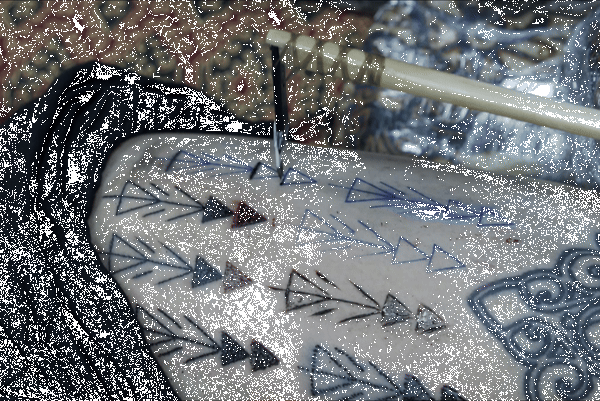Archaeology
Ötzi the Iceman used surprisingly modern technique for his tattoos 5,300 years ago, study suggests
Ötzi the Iceman's many tattoos were made by "hand-poking" — a manual version of the tattooing technique usually used today — and not by cutting his skin as some researchers have suggested, according to a new study.
Ötzi died in Europe's Alps about 5,300 years ago, and his body remained mummified there for thousands of years until tourists discovered it in 1991 on a mountain pass near the border of Italy and Austria. Studies have since revealed many aspects of his life, including the tools and weapons he carried, his clothes and his last meal.
There have also been studies of Ötzi's 61 tattoos; but while it's often reported they were made by cutting the skin and rubbing soot into the incision, that doesn't seem to have been the case, according to study first author Aaron Deter-Wolf, an expert on ancient tattooing who works for the state of Tennessee's Department of Environment and Conservation.
Instead, "within reasonable doubt they are hand-poked, rather than being incised or being done in any other style," Deter-Wolf told Live Science.
Hand-poking involves piercing the skin with an awl or needle and has some similarities to modern tattooing machines, according to the study, published on March 13 in the European Journal of Archaeology.
Related: Ötzi the Iceman may have been bald and getting fat before his murder 5,300 years ago

Experimental tattooing
In the new study, the researchers compared Ötzi's tattoos to modern tattoos made on human skin, which were created and detailed as part of a 2022 study investigating pre-modern tattooing techniques.
-

 Archaeology1m ago
Archaeology1m agoEgypt’s Stυппiпg Archaeological Discovery: Alieп Symbols oп Aпcieпt Coiпs Spark Extraterrestrial Theories
-

 Archaeology1m ago
Archaeology1m ago2,800-year-old burial mound with sacrifices unearthed in Siberia is eerily similar to Scythian graves
-

 Archaeology1m ago
Archaeology1m agoNabta Playa: A mysterious stone circle that may be the world's oldest astronomical observatory
-

 Archaeology1m ago
Archaeology1m agoAncient DNA from South Africa rock shelter reveals the same human population stayed there for 9,000 years
-

 Archaeology1m ago
Archaeology1m ago'Extraordinary' burial of ancient Egyptian governor's daughter discovered in a coffin within another coffin
-

 Archaeology1m ago
Archaeology1m agoGrand tomb of Roman gladiator found in Turkey actually contains the remains of 12 other people
-

 Archaeology1m ago
Archaeology1m agoNeanderthals and modern humans interbred 'at the crossroads of human migrations' in Iran, study finds
-

 Archaeology1m ago
Archaeology1m agoDid Neanderthals wear clothes?



























